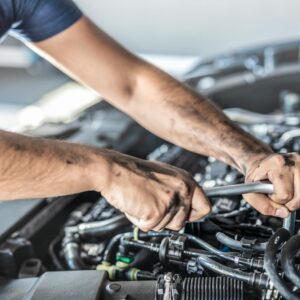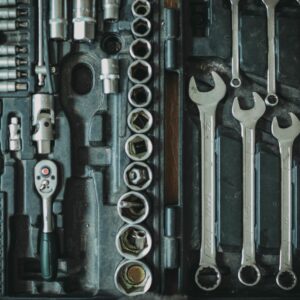All DIY Auto Mechanics Need a Tool Box Drawer Liner to Prevent Rust

All DIY Auto Mechanics Need a Tool Box Drawer Liner to Prevent Rust
With a rising number of vehicle repairs being done at home (thanks to growing costs of vehicles, vehicle parts, and car repair services), DIY auto mechanics would be wise to invest in a tool box liner to minimize the risk of rusted tools.
Zerust tool box drawer liner uses vapor corrosion inhibitor (VCI) technology in the manufacture of tool box drawer liners, which are made of heavy-duty non-slip rubber and can be cut to size to fit any size tool box. They prevent rust and corrosion, keep tools from slip-sliding-knocking into each other, and last up to 5 years.
If the goal of these do-it-yourself auto maintenance is to keep costs in check, then keeping your tools in good shape for as long as possible should be a priority as well. That’s why we keep our VCI tool box drawer liner stock affordable,. with all options under $20.
DIY Auto Repair on the Rise
It’s a common misconception that younger motorists are clueless when it comes to caring for their own cars. But a number of recent analyses on DIY auto repairs are proving the opposite is true. A survey by SimpleTire of 1,000 adult car owners found that two-thirds worked on their cars during COVID-19. Further, Gen Z car owners were the most likely (86%) to say they work on their own cars, followed by Millennials (79%), Gen Xers (73%) and Baby Boomers (46%). DIY auto repairs were more common among truck and Jeep owners, compared to people who drove sedans and SUVs.
A similar analysis published by AutoWeek found that Millennials and Gen Z car owners were 39% more likely to repair their own cars than Baby Boomers, the former motivated primarily by financial savings.
This makes sense considering:
- The average cost of vehicle maintenance and repairs in the U.S. was $1,160 in 2022 – a 43% increase in a 10-year span. These costs rose most sharply in the Midwest – 53% from 2012 to 2022.
- Vehicle owners can save hundreds – possibly thousands – of dollars by doing their own auto repairs and maintenance. For example, a shop might charge you $200 to replace your headlights – a job AAA says a capable DIY-er could do for about $20. Changing your own oil can save you anywhere from $100 to $300 a year. A coolant change costs about $400 in the shop, but you can DIY for about $85. For a basic tune-up, the pros will charge about $350; you can save about $100 doing it yourself. Changing your own brake pads can save you about $200+.
- Auto repair and maintenance tools aren’t cheap. Professional mechanics can easily spend tens of thousands of dollars on tool sets. At home auto repair tool sets are a lot less, but can still easily top $75 or more just for the basics. All tools with metal components that aren’t stored clean, dry, and in low-humidity (ideally with a vapor corrosion inhibitor) can rust. If you have a cheaper set of tools, corrosion will happen much quicker.
 Problems Post By Auto Tool Rust
Problems Post By Auto Tool Rust
Rust and corrosion are major problems for tool owners. There are thousands of pages of web content dedicated to answering the question, “How do I get rid of rust on my tools?” But prevention will always be better than trying to chase down a solution after the fact.
Problems post by tool rust include:
- Compromised safety. Rust and corrosion weaken the structural integrity of your tools, making them more likely to fail or break while you’re using them. If you’re working on heavy machinery – like a car or truck – that poses a significant safety risk. Not only that, you could cause damage to the vehicle or part on which you’re working.
- Poor functionality. Even if it doesn’t fail completely, a rusted tool may not work as well as it should. It may not fit properly, grip well, or be easy to maneuver. That could lead to inefficient repairs – or possibly the need to take it to a repair shop to fix (exactly what you were trying to avoid).
- Shortened tool life span. Corroded tools wear out faster, so you have to replace them more frequently – which can get expensive. But if you can keep them rust-free, they’ll stay in good working order for longer.
How a Zerust VCI Tool Box Drawer Liner Can Help
VCI technology works by releasing corrosion-inhibiting molecules into the air inside an enclosed space – such as a tool box. These molecules form a protective layer on the surface of tools, preventing moisture and oxygen from coming into contact with the metal and causing rust or other types of corrosion.
A VCI tool box drawer liner protects your auto maintenance tools while they’re enclosed in the tool box. The vapor corrosion inhibitors actively protect all metal components – even those that are hard to reach – while the tools are safely in storage.
*************@************ts.com“>Contact Zerust for information on VCI products to help with rust prevention of a range of consumer products – including your hand tools and power tools – by emailing us or calling (330) 405-1965.
Additional Resources:
35 Automotive Maintenance Tasks You Can DIY, April 19, 2024, By Steve Maxwell, Family Handyman
More Blog Entries:
Look for a Tool Box Drawer Liner That Wards Off Rust, April 10, 2024, Rust Prevention Tool Box Drawer Liners Blog


 Problems Post By Auto Tool Rust
Problems Post By Auto Tool Rust


